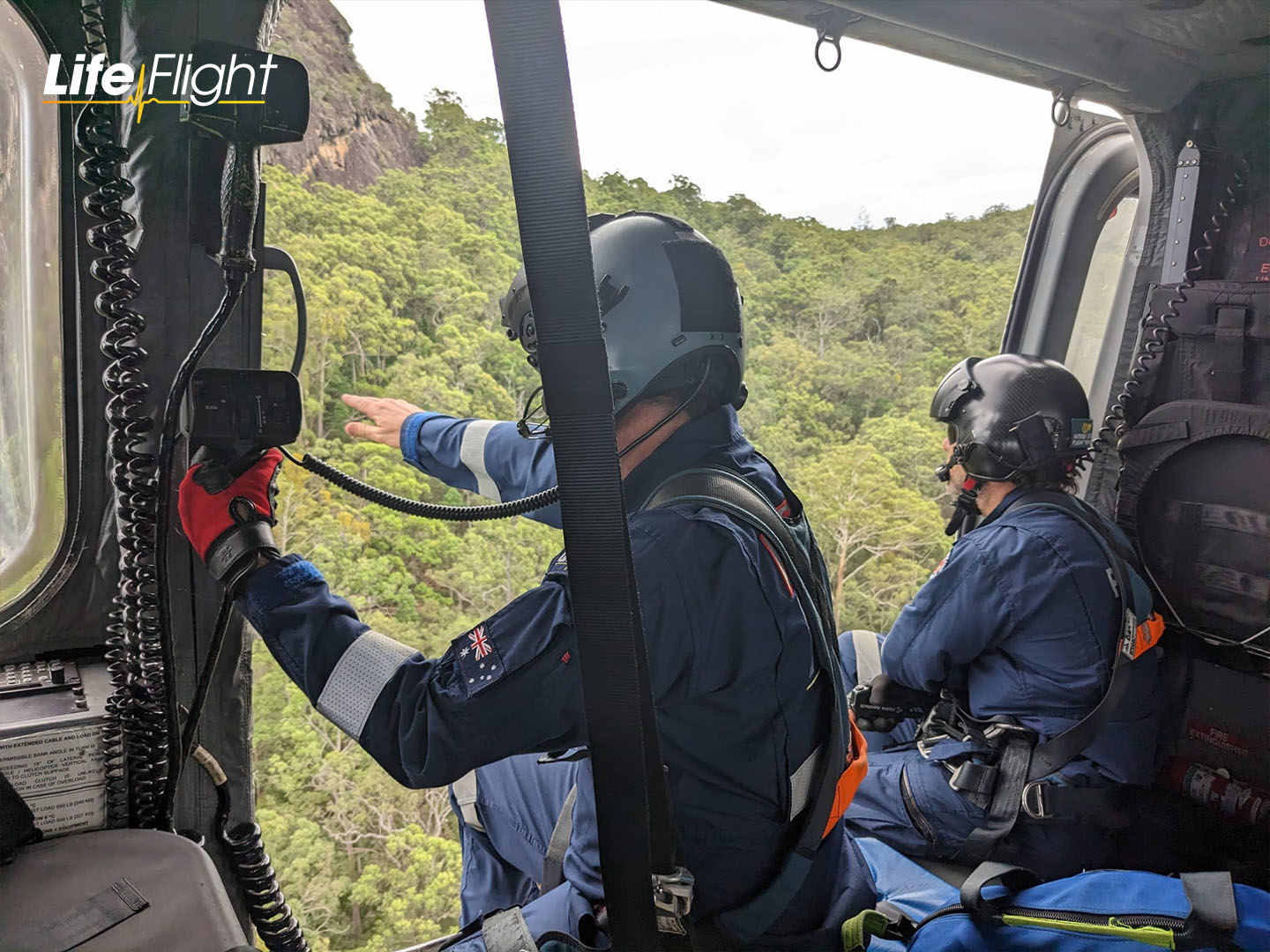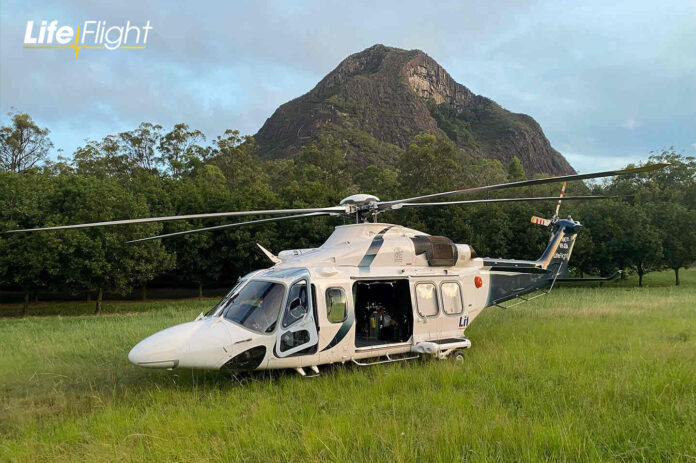The Sunshine Coast-based RACQ LifeFlight Rescue helicopter crew came to the aid of 481 people last financial year, helping make it a record year for LifeFlight Australia.
Serving the Sunshine Coast region and beyond, the chopper team spent more than 744 hours flying in those 12 months.
Across Queensland, the service’s rescue helicopters, air ambulance jets, critical care doctors, flight nurses and paramedics assisted 7349 people in need in 2022-23.
The most common reason for the crew to be tasked directly to an emergency scene was to attend serious motor vehicle incidents, with 77 incidents requiring urgent aeromedical response from the Sunshine Coast crew across the year.
“Across the state crashes continue to be one of the main reasons why RACQ LifeFlight Rescue is called out on missions,” RACQ spokesperson Lauren Cooney.
“Last year Queensland had its worst road toll in more than a decade.
“When we look at what’s causing those crashes, it continues to be the Fatal Five. That’s speeding, driving under the influence of drugs or alcohol, driving distracted, driving fatigued and not wearing a seatbelt.
“It’s simple: when you’re behind the wheel, make a commitment to get back to basics. Take road safety seriously and do everything you can to get to your destination safely.”
The next most common reasons for call-outs for the Sunshine Coast crew were cardiac/chest pain (68 missions), medical/illness (41 missions), neurological (39 missions) and falls (32 missions).
The service is seeing other forms of transport also causing dangers.
“E-scooters are becoming more and more popular as a mode of transport but people need to remember that they are not a toy, they can be very dangerous,” Ms Cooney said.
“Before you get on an e-scooter make sure you know your road rules and make sure you treat it as you would when you’re driving a car.”
The total cost of the missions performed by the Sunshine Coast crew is estimated to be $12.4 million, which comes at no charge to patients.

LifeFlight traces its history in Queensland back to 1979 on the Sunshine Coast, when the rescue chopper took off on its first mission from a base at the Big Cow on the Bruce Highway.
Since then, the service has come to the aid of more than 81,000 people.
RACQ LifeFlight Rescue critical care doctors and Queensland Ambulance Service flight paramedics are vital members of the Sunshine Coast helicopter crew, which means patients receive the highest level of medical care from the moment the rescue chopper lands at a location, as well as in-flight.
“They are able to go to the roadside scenes to stabilise patients and provide definitive care, like they would in a tertiary hospital or tertiary intensive care unit,” LifeFlight director of clinical services and governance Dr Jeff Hooper said.
“Essentially our doctors, nurses and paramedics carry pretty much a mobile intensive care unit where they can do lots of procedures – whether that’s on the side of the road or within a small hospital, to stabilise patients and bring them to that higher level of care.”
While there have been numerous dramatic rescue missions, much of LifeFlight’s aeromedical work involves inter-facility transfers (IFT) – moving patients between medical facilities – which ensures all communities have equal access to the best possible healthcare, no matter where they are in the state.
“I think that the work we do for IFTs is really important to the people of Queensland. The majority of Queensland is a rural environment and people are a long way from really high levels of tertiary hospital care,” Dr Hooper said.
“Our feeling is that every Queenslander deserves that opportunity to be rapidly transferred to a world-class standard of care.”
Help us deliver more news by registering for our FREE daily news feed. All it requires is your name and email at the bottom of this article.





